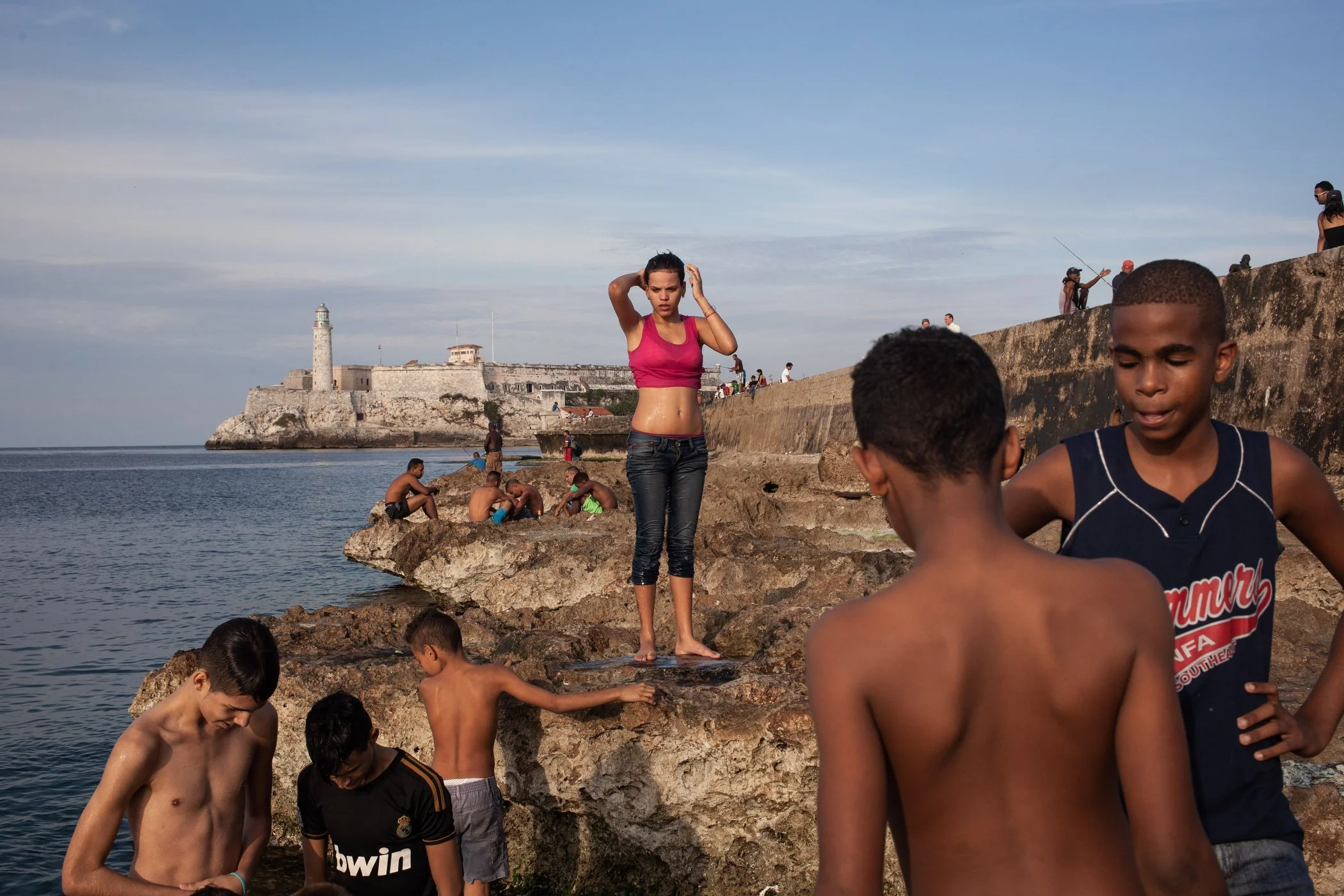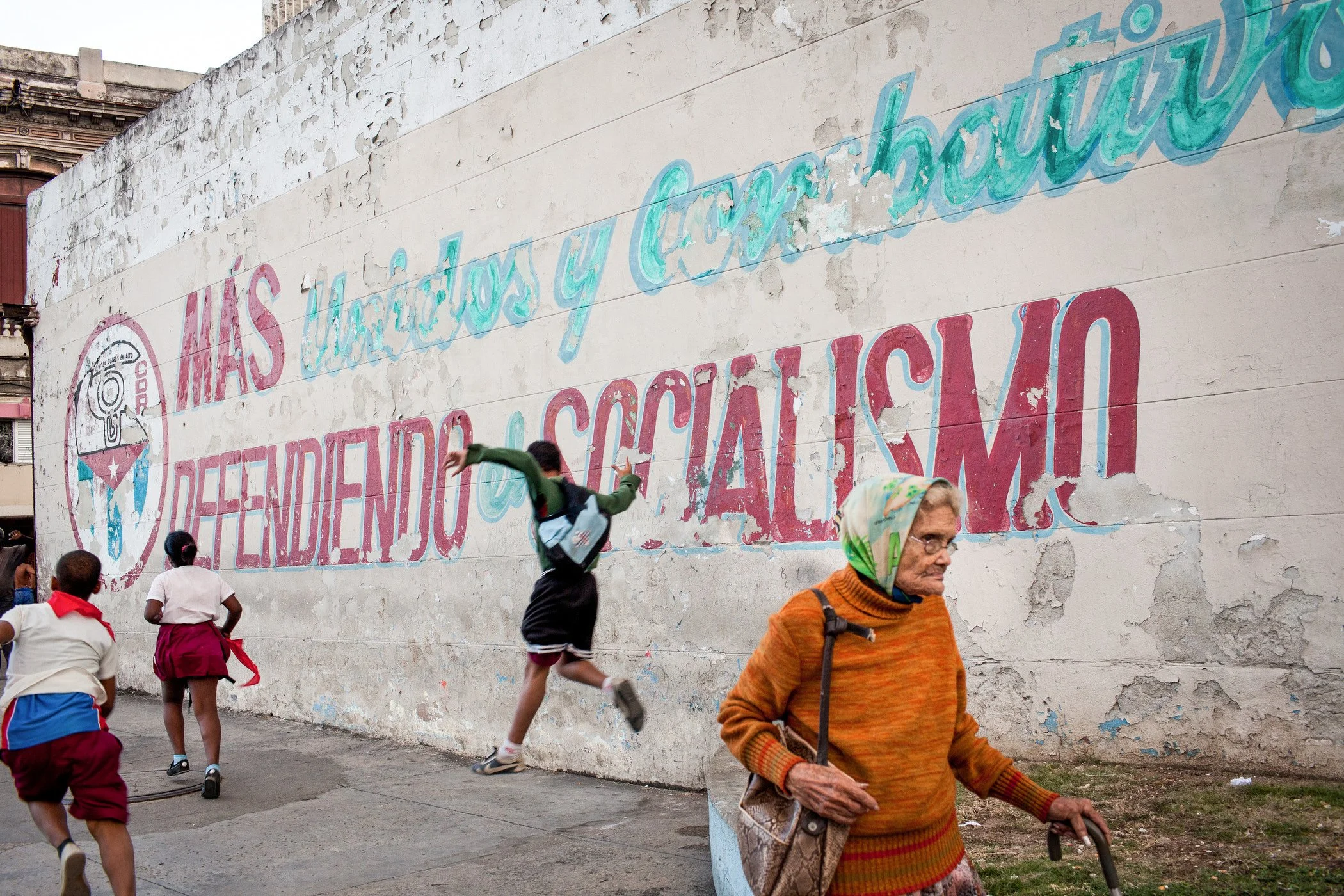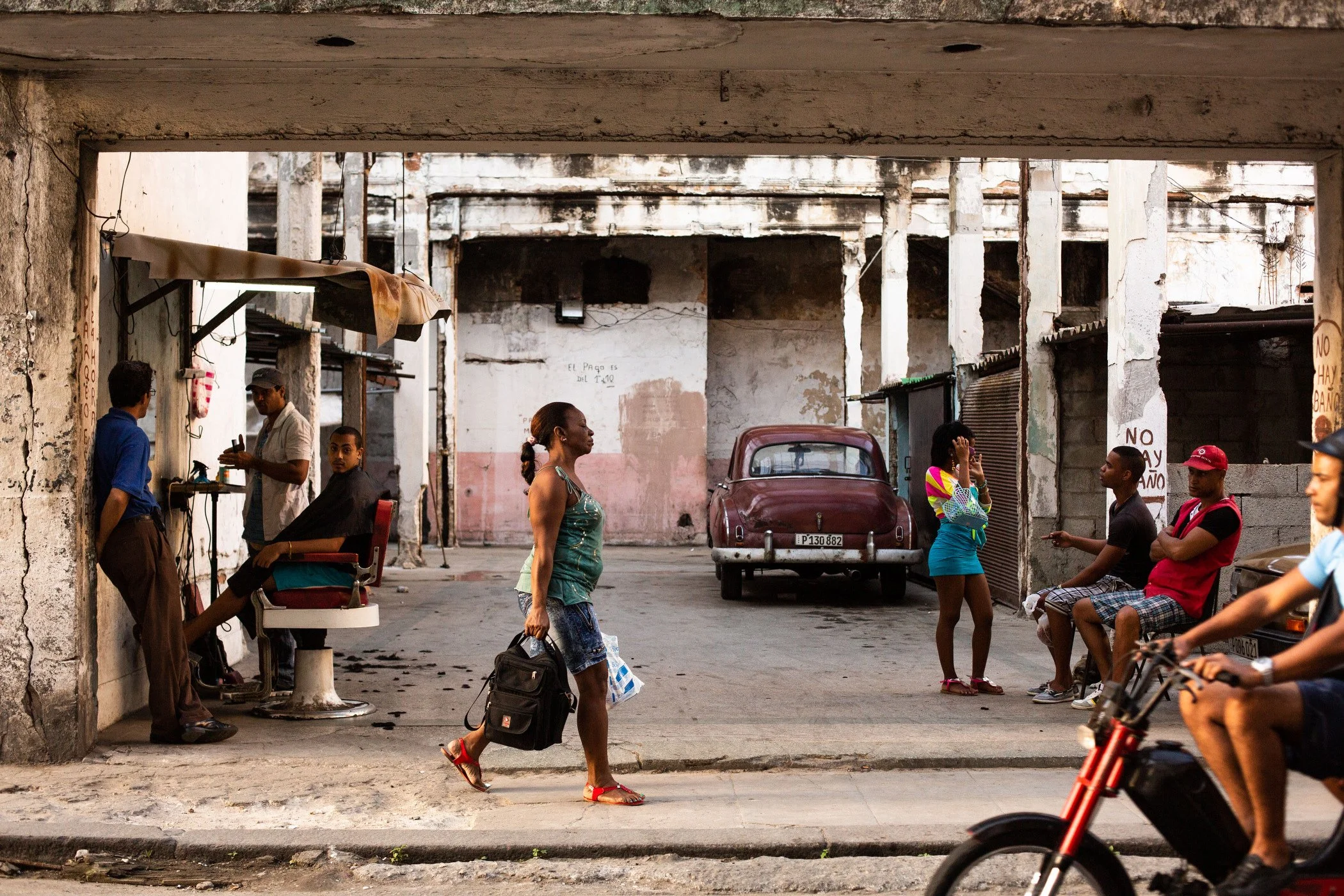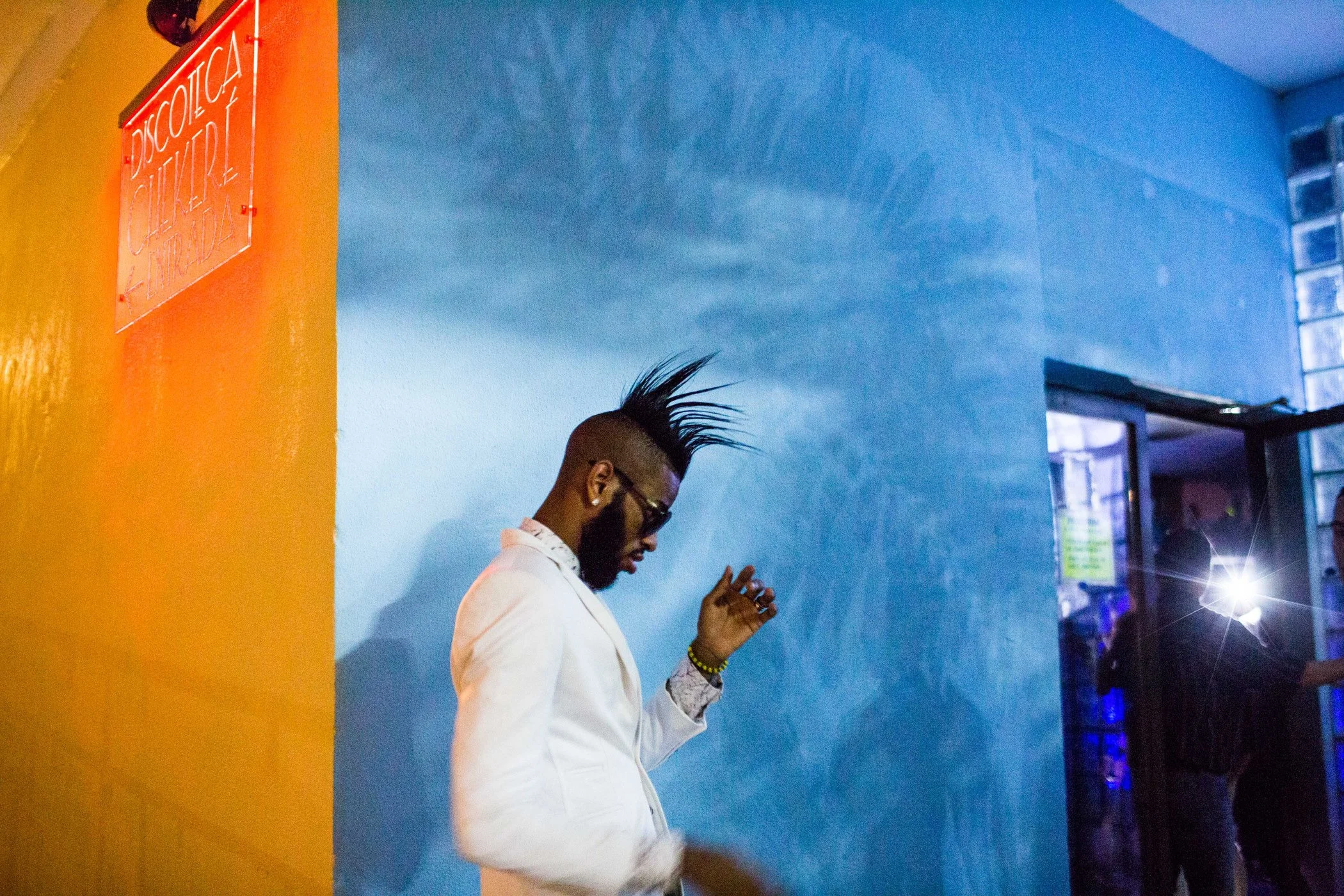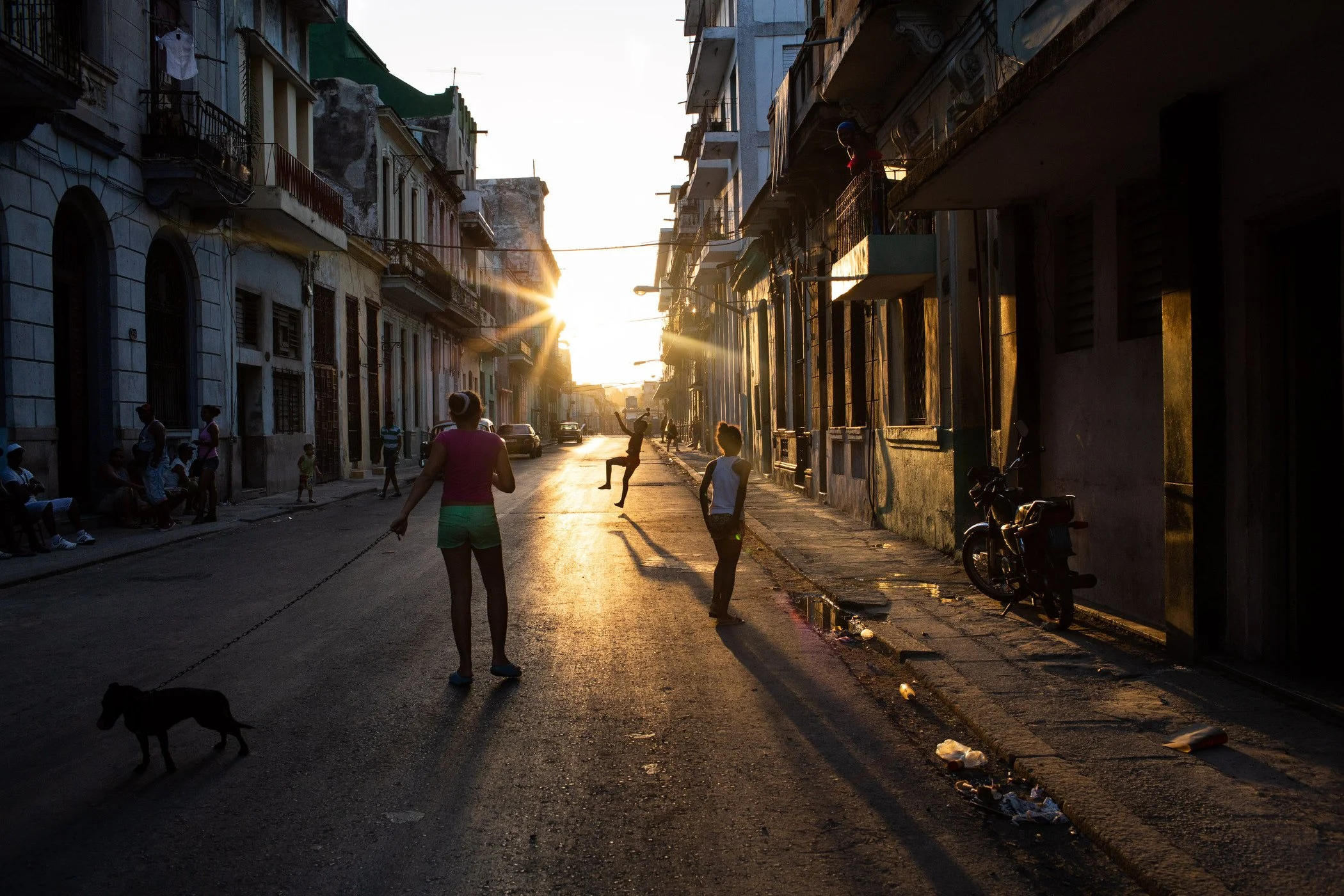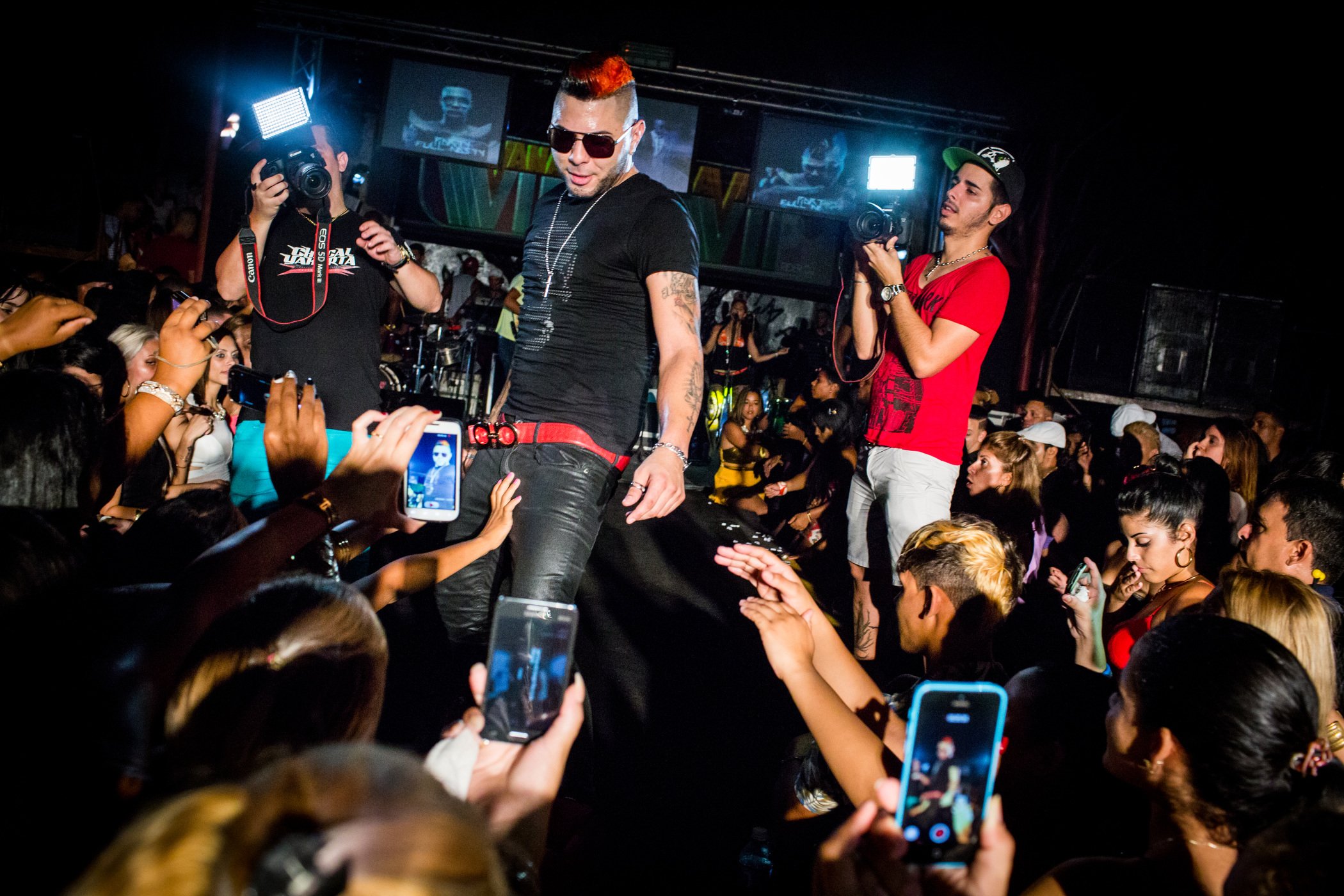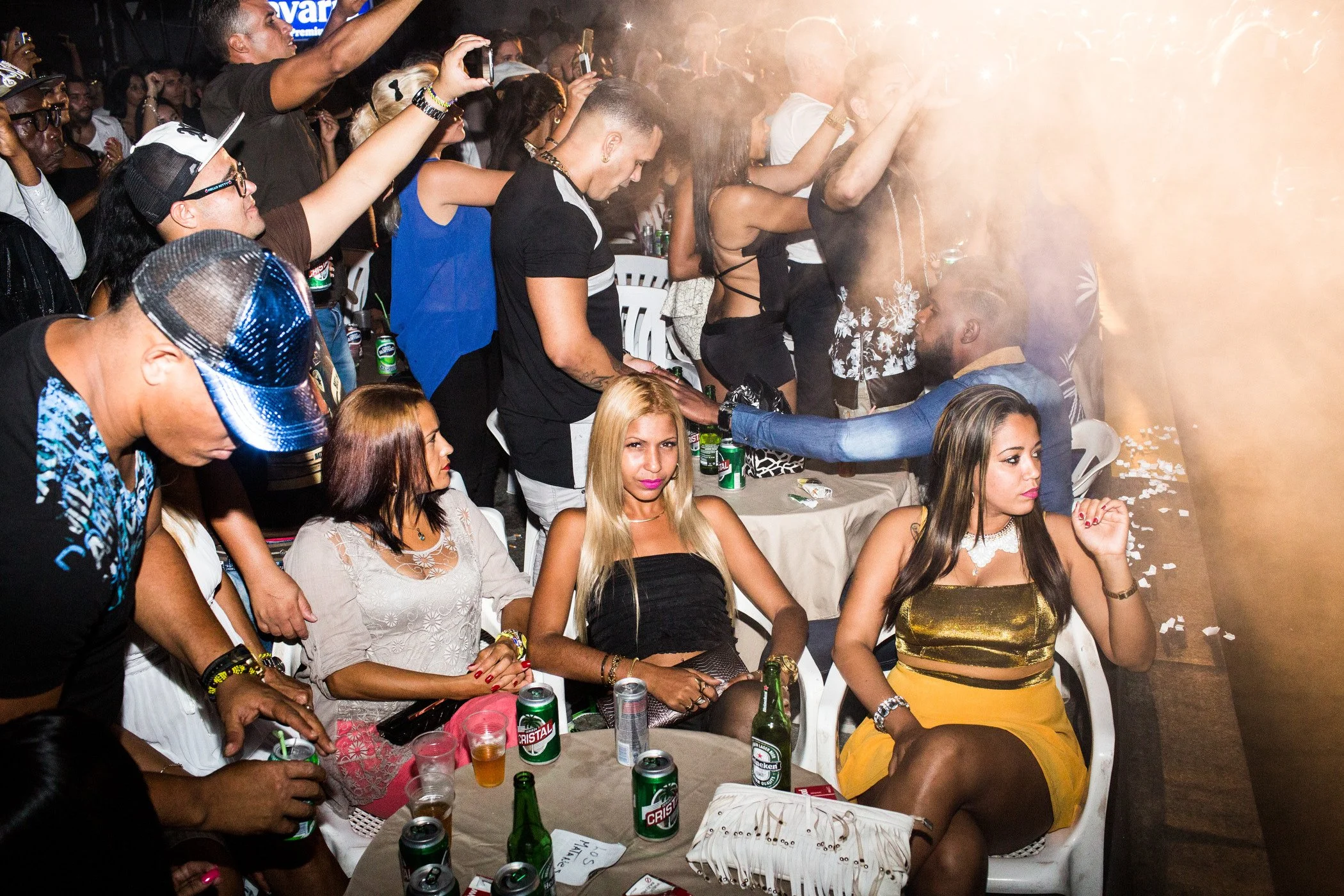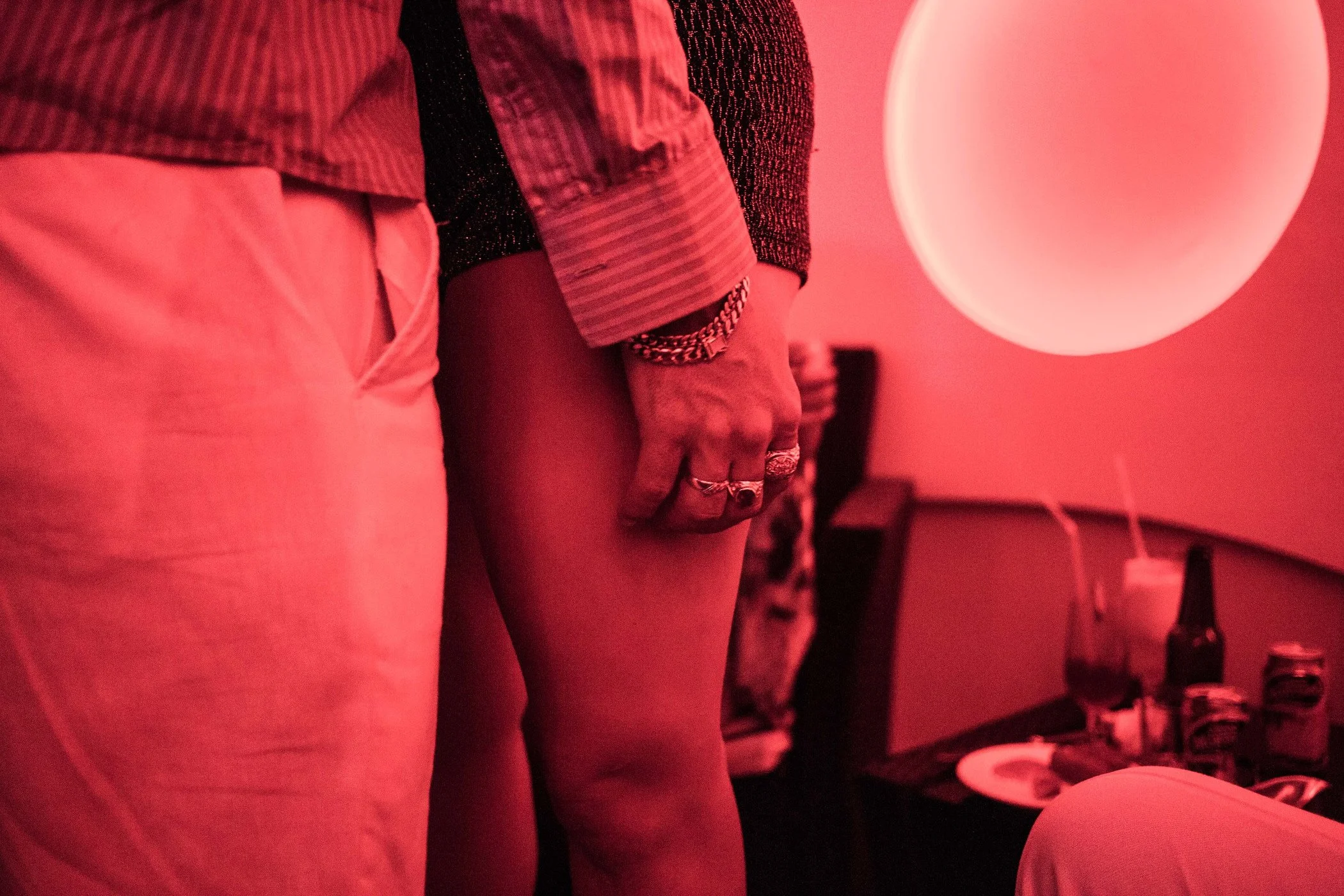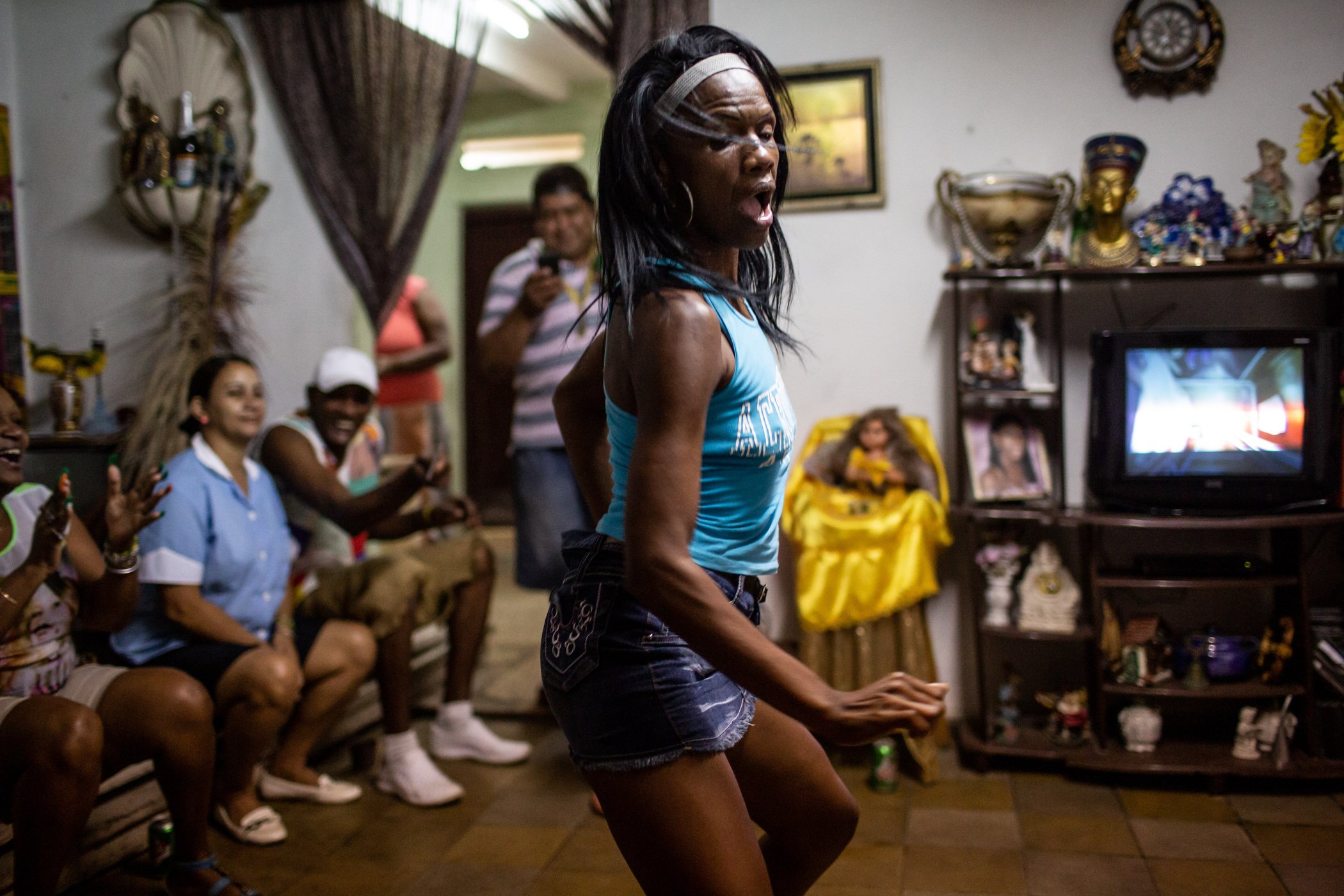The Beautiful Disappearing
Originally published in “Bridges to/ from Cuba”, 2021
I was living in Cuba alone. I had hoped to stay for six months and work on photography projects but it turned into five years. When I’d gotten there, I lived with a senior citizen who hovered over me in her kitchen, making sure I didn’t steal any food. So, when I heard about a place in Centro Habana, I jumped at the opportunity.
When I moved there, the building on the corner of San Lázaro and Escobar, haunted me. To get to my new place, I had to pass it every day. It was four stories but the third floor had collapsed. Yet, apartments on the level above it remained inhabited. People lived above those hollowed-out spaces, hanging on the edge of a disastrous fall. A fall that I thought could happen at any moment.
I was too afraid to look closely at the people floating on the top story, who seemed like ghosts. So I kept my gaze down when I walked by, focusing on the little nook of an apartment tucked into the ground floor below that certain demise. I’d photographed the wedding of the young couple who lived there, Dunia and José. They’d carved out their futures despite the catastrophe overhead.
Each day when I passed it, I focused instead on the mural next to Dunia’s door, of my neighbor Fabian, the graffiti writer with a blonde streak in his hair and a skateboard —a painting of his image fixed onto what was left of the crumbling building. Then, I would duck into my stairwell next door.
Climbing the pitch dark even-in-daytime steps, the braille of a tight space took me to my top-floor apartment. The walls couldn’t bear any more, years of painted-over mold disintegrated into a powder that begged: take me with you, and dusted everything I owned with its desperation.
In that apartment I took refuge from the constraint of Centro Habana’s decay. The owner had tried to make it beautiful with new glossy white tiles, beige paint, a foam mattress, and a metal tube where I hung my clothes. And it was mine.
It was 2015. I had gotten to Havana the year before to work on self-assigned stories about Cuba’s economy —private sector elements creeping their way onto a stronghold of communism. But while I was there, the US and Cuba renewed relations on December 17, 2014. I immediately began working as a photojournalist for international publications, building on connections I’d made living in New York. Taking assignments almost daily, I spent late hours in hotel lobbies transmitting images over shitty Wi-Fi at ten bucks an hour.
I was always drawn to Cuba; it was my whole identity. My mom’s family left the island when she was 12 and she’d made it her mission to pass down her most precious heirloom: being Cuban.
But in Havana, I was just like any other outsider. So I made up for it by trying to soak up the secret codes of life there: hand gestures and head nods that went unnoticed to the untrained eye (two fingers tapping twice on the shoulder meant “government official,” a single downward head nod signaled “come here”). I learned my way to the outer edges of Havana, like Párraga, where my mother was born and where I went regularly to visit my grandma’s sister, Justina. I gave cab drivers directions. When I liked something, I said, me cuadra. Gao, for house, pincha, for work, and pinga, for everything else —the versatile slang that means “dick” but is used to express excitement, anger and everything in-between.
Cubans always asked me why I'd moved there, they said they all wanted to leave. The irony wasn’t lost on me and I wondered too: what the fuck was I doing here? I tried to prove myself with my work. I had enough diaspora in my accent to garner trust and often gained access to stories that intrigued me. I began to find a way in.
—
From the perch overlooking San Leopoldo, the little piece of Centro Habana where I lived, I’d lean through the newly white-painted wooden shutters high as doors. I could see the ocean and the malecón to my right. To my left, the rest of Escobar, like a gateway to Centro Habana, a narrow street lined with multi-colored colonial buildings as far as I could see. A few fixed-up casas particulares punctuated the multitude of dwellings in disrepair, like Lázara’s ground-floor apartment across the street, an open whale’s mouth full of bones and raggedy clothes. Silent. Save for the sound of her two young children’s laughter.
I’d casually converse with my neighbor, Rey, through the airshaft in the kitchen, the black hole that ran through the building like a tube from an oxygen tank for its asphyxiated apartments. The construction of barbacoas had left the structure gasping for breath. On each level, little wooden lofts were crammed into once-elegant high ceilings —inspired not by architectural beauty but the necessity of an overcrowded city.
“¡Vecina!” Rey would yell when he needed something.
“Dime,” I’d respond, peeking over the shoulder-high wall in my kitchen, shouting into the void. But there was no need to shout; the airshaft evaporated any illusion of privacy into the ether and we could hear everything that happened in each other’s homes. Rey was about my age, 30, white and muscled, with pocked cheeks and slicked-back brown hair. His cheap cologne filled my house and my bedroom —a mix of Pine Sol and cinnamon— I always knew when he was going out.
When it rained, the gaping cavity let it rain right into my kitchen. I never cooked anyway. I could barely find fresh food in Centro Habana. And I almost never had the energy to navigate the daytime heat outside. I’d occasionally walk by the agro, where the one-armed vendor swatted flies off rotting fruta bombas, and I’d keep walking. I lived on crispy ten-peso pizzas from the joint on the corner instead.
The restlessness of life in Centro Habana had its own original score. It was reggaetón.
Daily, the music pounded from Rey's house, through the airshaft, and directly into my psyche. A quick crescendo, then suddenly full-blast —obliterating my thoughts. Besito Con Lengua.
On sleepless nights, at 4 a.m., I would lean against the windowsill watching as a teenage bici-taxi driver came to my street and parked his bike in the middle of the block. The air dense with mist from the Caribbean made a ring of humidity around the streetlamp, a golden orb that floated above the bike and its driver as he macked on my young neighbors, the girls from the block. He’d turn the bike with its cart and awning on its side, useless, then he leaned himself against a wall. The girls flirted. El Chocolate (cho-coh-la-teh) songs played from a small speaker he’d set up on the sidewalk that rhythmically lit up. The tunes buzzed through the air like a single mosquito among the lush soundscape of waves crashing on the sea wall.
On Escobar I wondered, if reggaetón was banned by the State, why was Chocolate’s take on Tego, Fina Pero Cochina, the seventh passenger in so many damn collective cab rides? And how did reggaetoneros manage to be pervasive and prohibited at the same time?
Reggaetón rebelled against every static element of Cuban tradition.
Most international journalism focused on Cuba's restrictions but I felt more interested in where Cubans found freedom. I wanted to tell stories that locals would love and would feel described their lives. Not politics. Reggaetón was my answer. It was available to everyone with a speaker. Each song an ode to la calle —the art of hustling on Havana’s streets.
The gods and goddesses of reggaetón genuflected at the church of capitalism, apolitical deities of the people, bringing in-your-face materialism to mainstream Cuba. Their message was wholly and sacrilegiously anti-Castroism.
I searched for deeper meaning within its paradox and within myself.
A mentor once told me that we need loneliness to fuel our work. The hunger for human connection would drive us to feed ourselves with stories and interactions with the society we chose to study and photograph. If hunger was motivation, I was starving. I craved anything that let me forget the hollow pangs inside.
This worked for me because I had moved to Cuba on a mission. I had spent many summers there before but by the time I moved to Havana most of my old friends had left the island. My habit of falling in love distracted me in the past, so this time I promised myself I’d focus on building a career and set romance aside. Without my lovers or my posse, I was suddenly exposed to Cuba’s misogyny. Especially in that first year, I felt like I never fit in. The world of Cuba constantly chafed against me and I reacted like I was allergic to it.
Men have corrected me, hoping to trade the word misogyny for one with lighter connotation: machismo. Though it’s more palatable, the word belies responsibility. What I felt, was a patriarchy laced with aggression that kept my nervous system on edge.
Walking down the street was an obstacle course of male energy. Piropos came towards me like a challenge for open combat: simple catcalls escalated into men blocking me from walking, gawking while rubbing their bellies, honks blaring from Ladas or almendrones, and without fail the omnipresent psssssssssst. Also, an occasional ass-grab or an unwanted touch. Once, I was followed home for hours. I winced at the sounds. At times I lost my shit in public and shouted at them to stop —when this happened, they laughed. I wondered how Cuban women dealt with it. Maybe I had been too sheltered before this. I knew women all over the world experienced far greater violations yet, I felt alone.
Seeking companionship of like-minded people, who understood the trials of working in a country like Cuba —a place that systematically abhorred professionalism— I tried to make friends.
Professionally, I crossed paths with mostly men but I kept my distance. Sexual advances of those with wives or girlfriends later made me uncomfortable in Havana's small social circles. I was told once by a government official in his office that Cuban men were taught to always tell a woman she was beautiful. In the words of his father, “you have to at least try.” On some level, I could appreciate the openness but in professional contexts I shuddered at even innocent compliments.
I kept to myself, and quickly burned down my chances at a social life with a series of I’d rather not’s.
Being propositioned while on assignment highlighted my existing insecurities, too —I’d photographed in Cuba for years but had only just started getting hired. The unwanted sexualization at work reminded me of my self-doubt, at times it filled me with rage. Fighting against the social norms left me drained. Living in Cuba only fortified the protective walls I’d already built.
After long days of work, the dark ascent to my apartment weighed me down. A crushing loneliness grew heavier with each step.
—
One day, at the airport, I spotted the reggaetonero, El Chacal. His red Mohawk stood out in the crowd and I recognized him from cafetería T.V. screens and Rey’s sound system. Besito Con Lengua. I introduced myself and his manager invited me to a concert the next day, where I arrived to find reggaetón’s appeal suddenly made sense. It was the antithesis to everything about Cuba that seemed to be falling apart. Soon, I sought the exhilaration of staying up all night photographing the after-hours shows. And I exalted in a brand-new feeling: disappearing.
It was ironic that in the over-sexualized ambiance of reggaetón, with its objectifying lyrics towards women, I would find a reprieve from the unceasing toxic masculinity that had worn me out. Compared to the bodacious women that inhabited this space in their skintight clothes, make-up, extensions, acrylic nails, and silicon injections —I wasn’t even there. In my tomboy outfits, I hid behind the camera. And in that world I was just, la periodista. For me, the experience was divine; I went back for more.
Sexism at the forefront of reggaetón’s allure, there was no need for it to come out sideways like in other areas of life. The women on the scene had chosen to be there —suspending belief or playing into problematic roles— at least it was up to them.
I threw myself into the project, finally having found a place I could work uninterrupted. For most of 2015 I spent every free moment immersed in Cubatón culture.
By the next year, I had published the reggaetón work and moved onto new projects. I also moved out of my apartment on Escobar and started dating a guy who everyone called Killer. We slept together on an air mattress in my unfurnished apartment in a new neighborhood, where they only played reggaetón on weekends.
One hot afternoon, I stuck my hand out in the street and pointed to the ground, signaling to a collective taxi. I boarded, riding down Avenida 23, then San Lázaro, towards La Habana Vieja. Passing San Leopoldo, I craned my neck to get a view of Escobar. A wave of nostalgia, then shock rippled through me when I saw it: the building on the corner, with its hollow third story, had finally collapsed.
—
In November of 2019, I left Cuba and came to Mexico City. Five years and one month after I accidentally moved to Havana in the first place.
While the human contact of those I photographed filled the hunger my mentor had recommended I maintain so many years ago, the loneliness had never left me. But by the time I moved away, I had been transformed.
Living in Mexico now, my heart aches for Cuba. I don’t miss the piropos, but I do miss the openness, the sexuality that oozes in each unique gait, the tumbao that only comes alive when a Cuban person dances. I miss the warmth —a vibrant passion that’s not imposed on you but somehow present in everything.
After a while, I had even come to appreciate what the government official told me about a man always shooting his shot —I grew to love being told I was beautiful. I miss the greetings with strangers that all begin with mi vida and the texts that all end in beso. The casual conversations with anyone who will listen and the random passengers on the bus who hold your things for you.
I need Cuba now that it has saturated my being and I can’t go too long without it. I watch Fresa y Chocolate just to hear the Cuban accents. My body misses the wild intensity, the highs and lows of life there, my projects and the photographs that were more meaningful because I had to earn them.
Right now, Cuba is bleak. I went back recently to see the once-trembling economy had collapsed. Censorship restrictions and a push for free speech have created boiling tensions between the government and the people. But I still miss it.
The other day, my friend Fabian, my neighbor on Escobar whose portrait was graffitied below my apartment —the artist who paints 2+2=5 and a masked man all over Havana— sent me a picture of the new house being built on the corner. Rising from the debris, an unapologetic structure that he says is ugly. The fine layer of sand smoothed over coarse cement has just been added, el fino, and something uniquely gorgeous emerges from the rubble. It’s like the Cuban identity I searched for during my time in Havana, like the thing you only know if you’ve lived it. It is what makes me who I am —even if I am the only one who believes it. ▣
